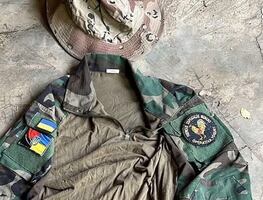Más Información

Marina reporta incidente del Buque Cuauhtémoc en el puente de Brooklyn, Nueva York; autoridades revisan daños

INE comprometido con derechos de la comunidad LGBTI en elección judicial; buscan eliminar discriminación al votar
A 3D printer that reproduces HD small porous structures, similar to bones , with biodegradable materials was designed by a student of the National Autonomous University of Mexico , as informed by the institution.
With this prototype called Biomaker , the postgraduate student in Industrial Design at the UNAM, Aarón Misael Ortiz de la O won his pass to represent the university at the Global Grad Show 2019 in Dubai Design Week .

In the meeting, students, academics, businessmen, and investors exhibit, reveals, analyze, and evaluate their design projects .
Through a statement, the student said that one of the advantages of his design “is its low cost in comparison to similar devices that are available in the market,” in addition to it having an area inside it for the sterilization of materials.
Have you heard of the
?
Nevertheless, one of his objectives is still “to further lessen the costs for it to be acquired in tissue engineering labs and having better scientific advances.”
The researcher added that at the Digital Manufacture Laboratory of the postgraduate course in Industrial Design , they carry out digital documents to obtain a bone scan that they turn into a 3D model.
Then, they print a scaffold (biological structures designed to be implanted to replace or restore tissues) with certain geometry and porosity, depending on the area of the bone that is expected to be recovered.
Have you heard of the
?
“The digital document is sent to the printer that builds each pore of the piece layer by layer,” he explained. He said that once the scaffold is ready, it is sent to tissue engineering where they administer cell culture for cells to reproduce.
“The first results can be seen in three to seven days, but it takes approximately three months to obtain the tissue per se” he stressed.
Ortiz de la O
pointed out that the advantage of his scaffolds “is that they are biodegradable and are reabsorbed in the body,” in addition to them being able to substitute metallic or ceramic grafts that, despite not being too toxic, they do produce malformations in the bones and prevent them from healing correctly “for they are never static and move according to the loads the support.”
Have you heard of the
?
He explained that Biomaker works with polyactic acid , a cheap polymer obtained from plants like barley, wheat, corn, and even from milk.
“It has great potential in the organism and can be used not only for cell-regeneration scaffolds but also in surgery guides without any risk for patients,” he added.
He said that the scaffold’s patent is in process and within it, there will be a sub-patent of the printer , for there are already patents for this kind of device.
Have you heard of
?
“Since the printer is an improvement or an adaptation that has not been previously used, it can be registered as a utility model and that is another kind of patent,” he explained.
Although he is an industrial designer, the student began to be interested in the medical world with the elaboration of surgical guides for dental implants and prostheses . In a congress, he med his current tutor and ventured to continue his postgraduate studies with the Biomaker project.
“My plan is to improve the printer because it is still a prototype and we must continue until it is ready. I want to study a doctorate and I’d like to participate in more design congresses in universities that have not yet included these areas because there is a lot to do,” he concluded.
Have you heard of the
?
mp




